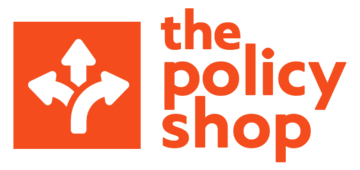Regulators Gone Wild
Staff talk about the ‘cost of compliance’ in a few ways: mandatory financial reporting, administrative burden, new requirements, ‘box-ticking,’ required reporting. The behind-the-scenes, incremental nature of paperwork municipal staff in Ontario are expected to provide to multiple provincial ministries can obscure the aggregate burden of reporting and the reality that it diverts significant staff resources away from supporting Council’s community projects. The quality of care, undivided attention and amount of time staff have for projects originating in Council Chambers is siphoned off by paperweight that pre-exists the election of any local official and for which performance standards are binary: Done or not.
Earlier in 2022, the Ministry of Municipal Affairs and Housing released its compilation of provincially-required reports, providing a first glimpse of what was otherwise a notional hollowing out. According to its information, work on the burden reduction file began in 2018, 436 reports were required in 2019, down to 350 in 2021. They are broken down by requisitioning Ministry, then program; each story contains different visualizations of the same 2021 data.
Note: A Ministry bubble and a program bubble being the same colour does not imply Ministry ownership of a program. To identify programs by Ministry, click the drop-down menu below, “All.”
For those that think municipalities’ main financial accountability should be to the people who pay for municipal services - local ratepayers - the absorption of administrative capacity through mandatory reporting on hundreds of provincial programs is concerning.
Aside from sheer volume, four things about the inventory initiative itself stand out:
Why did it take the Ontario Government four years to produce a tally of reports required by… the Ontario Government? Note the front end of the initiative’s stated goal: “To identify and review provincially required reports, eliminating, consolidating and simplifying reports where possible” implying that a ‘whole of government’ registry did not exist before the burden reduction initiative. In other words, the province didn’t know what the province required. Without knowing what the requirements were, regulators would not have known if compliance with them was even possible. For municipalities with a handful of staff, compliance with a reporting requirement 350 reports strong may well not be. In any case, it makes a perverse scenario plausible: municipalities take compliance more seriously than regulators do.
Some consider municipal provision of provincial programs a risk transfer mechanism. As such, for it to have been an effective transfer of risk, the province ought to have known whether or not municipalities, also known as delegated administrative authorities, could reasonably be expected to deliver on transferred requirements - in advance of a transfer - as part of their due diligence in pursuing a distributed service delivery model. A question for the Auditor General is, if it didn’t know but ought to have, was it an effective transfer of risk?
More importantly, if it didn’t know what it was asking for or if fulfilment was feasible, what does that say about municipalities’ capacity to perform the front-line service delivery component of the transfer? Where incapacity resulted in damage to property, the environment or harm to people, the liabilities flowing out of not performing this level of due diligence beforehand could be profound.
The Ontario Government is probably the body hungriest for municipal service and financial data, but it isn’t the only mouth to feed. As such, the 350 reports understate the scale of the overall burden. The next steps in quantifying it are:
Identifying how many outside organizations can make work for municipalities, (i.e. a range of federal government departments, PSAB, etc.); and
Tallying the non-discretionary outputs owing to each of them.
The agreement between Ontario and the municipal sector to upload the social service costs that had been downloaded, ‘the social service upload,’ was officially completed in 2018, yet some of the heaviest paperweight in 2022 owed to the ministries of Health (69 reports), Children, Social and Community Services (42 reports) and Long Term Care (24 reports). That volume of programs municipalities are still delivering and reporting on is a reminder that ‘the historic upload’ was a partial victory at the time and remains incomplete in 2023.
None of this is news to report-writers; what’s new is quantification of the total burden and, at 350 reports, validation of a long-standing sense of scale-creep. A more immediate concern is, when thousands of elected officials are sworn into hundreds of municipalities this fall, how much staff capacity and budget room will be available for them?
Reference
Ontario Government. Inventory of Provincially-Required Municipal Reports - As at October 15, 2021. Retrieved from https://www.mfoa.on.ca/mfoa/MAIN/MFOA_Policy_Projects/MMAH_Inventory_Required_Municipal_Reports.
